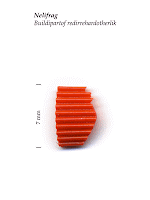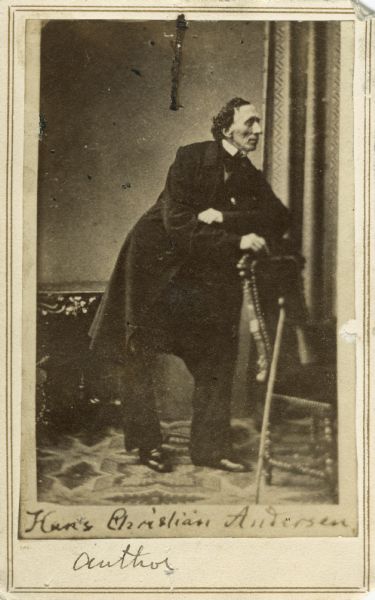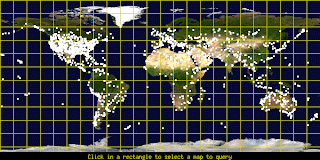
http://depts.washington.edu/civilr/BPP.htm
1. Collection Principles
This project, from the University of Washington, brings together an impressive array of materials related to the Seattle Chapter of the Black Panther Party for Self-Defense (BPP). The project includes photographs, digital videos of member oral histories, 140 newspaper articles published in Seattle during the group's most active period, a PowerPoint on Seattle history and how the Seattle BPP chapter fits into it, and lots of scanned documents and photographs relating the 1970 Congressional investigation of the BPP, focused primarily on the investigation covering the Seattle Panthers and the ensuing Congressional hearings on the findings. The site reminds me more of a project like
In the Shadow of the Valley, and less of a traditional digital library in a Content DM kind of format. The collection principle is not explicitly stated, but as the project in an introductory essay claims to be the most "extensive online collection of materials for any chapter of the Black Panther Party, including the Oakland chapter," the principle seems to have been to digitize everything the institution had or could get its hands on that relates to the topic. There are many sources of material represented on the site: the University of Washington's Special Collection Department (for the 140 newspaper articles, the majority of which can be opened as PDF files of the scanned original texts, which was great to browse), private collections of various chapter members (especially for photographs), and some other institutions, such as the Washington State Archives for photographs and the federal government for materials related to the 1970 investigation. There is update information at the bottom of each page of the project, which states that it has not been updated since December 1, 2007. So, one detraction might be that there does not seem to be ongoing active curatorial work on the collection.
2. Object Characteristics:
There are a lot of high-quality digital objects available in this collection. Many of the photographs blow up really large and none have watermarks. The videos stream smoothly and are really interesting (several feature a member of the party who is of Japanese ancestry, which was unique to the Seattle BPP chapter). The PowerPoint is not particularly impressive looking, but it is informative. Some of the scans of newspaper articles are not great, but it appears that this may have been related to the quality of the originals, and all that I opened were easily readable. One complaint would be that the some of the scans for the government documents are not very clear and the text came out somewhat muddy. But, when I used the zoom-in function on my PDF reader, I could still mostly make out what was written on all of the documents that I viewed.
3. Metadata
If the collection really fails on any count, it is in metadata. There is a lot of background information available on the site about the Party, and Seattle, and the government and police responses to the Party's activities, but not a lot on individual objects. For instance, the "photos" page tells you what institution each picture comes from by sorting them under institution name titles, but no further information is given on where they are held in that institution, how one would get to look at the original, or even what size or print type they are, or names of people in them and the date that the photo was taken. There is no metadata other than background biographical information on the subject speaking for any of the videos, such as when they were shot, although there is one little line on the introductory page of the site saying that the project editor shot them. I would not know how to begin locating the government documents they offer on the site, which is a shame because they are interesting, and I have known a few people who specialize in researching government suppression of Black radical activism who would find that information really useful. But, there is only a line of text describing the document that one clicks on to open the document, and that description is all of the metadata that is offered. There are no stable, unique identifiers for any objects on the site.
4. Audience
This site, besides the metadata issues (which would usually bother me enough to dislike the whole project, but this one is so cool that it almost balances out) could be useful to a range of people. The writing used to describe the history of the Party and the Seattle Chapter is accessible enough that a high school teacher could use it for a lesson. The fact that so many of the pictures demonstrate how young chapter members were might also help make the topic accessible to high school students learning about the history of social justice activism or African American history topics. The site was created in conjunction the Panther Legacy Committee, so it obviously also has a use there, for past Panthers or Panther supporters. Members of the general public who are simply interested in 1960s-1970s politics or African American activism would not find the site difficult to use or understand. Finally, scholars researching the Black Panther Party would find this site useful. I did a big research project on the Black Panther Party, so I know how limited primary source materials are for this topic, and this project offers a lot. The primary limitation that I can identify for the site's audience, beside the impediments to scholarly use that the lack of metadata could create, would be that it is geared, though not dogmatically, toward an audience sympathetic to the BPP story. The Panthers were controversial and are still demonized a lot in mainstream media (when they come up) as gun-crazy "nationalists." This site does a really good job, especially through the video interviews and the newspaper article database, of presenting an alternate view of the Party by showing how rooted the Seattle chapter was in community help programs such as providing free breakfast for school children, free sickle-cell anemia testing, and free clothing and shoe closets, as well as the more militant anti-police abuse activism that the BPP is better known for.
 Objects is entertaining, aesthetically pleasing to look and also contains a very creative "classification system.
Objects is entertaining, aesthetically pleasing to look and also contains a very creative "classification system. gresses through the names in a list format with a little thumbnail picture for reference. For example, all the things that were never alive (ie rocks, plastic) start off with the name Neli, and if it's a part of a whole= Nelipart and so on; all the Neliparts are grouped together. There is no search feature to easily access a particular specimen. As for metadata about each object, the only metadata made available on the site is the "name" and its dim
gresses through the names in a list format with a little thumbnail picture for reference. For example, all the things that were never alive (ie rocks, plastic) start off with the name Neli, and if it's a part of a whole= Nelipart and so on; all the Neliparts are grouped together. There is no search feature to easily access a particular specimen. As for metadata about each object, the only metadata made available on the site is the "name" and its dim ensions.
ensions.






























